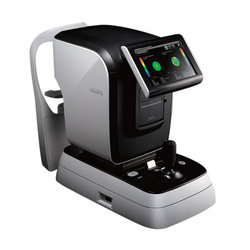
Name:
HRK8000 A Auto Ref-Keratometer Serial Number: HRK8000 A
Manufacturer Name:
HUVITZ ( FOR EXPORT ONLY )
HRK8000 A - Autorefractor Keratometer
Extreme Precision & Accuracy !
Most Advanced Wavefront Technology
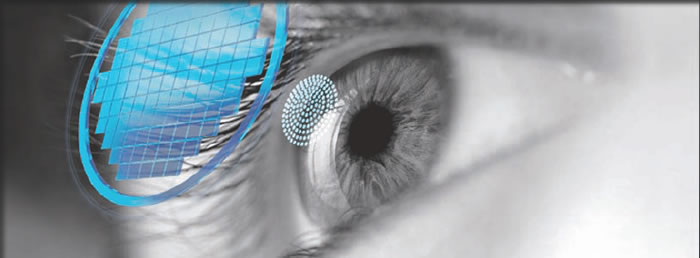
High Order Aberrometry Data Output Opens Possbilities for High Market trended customized lens applications.
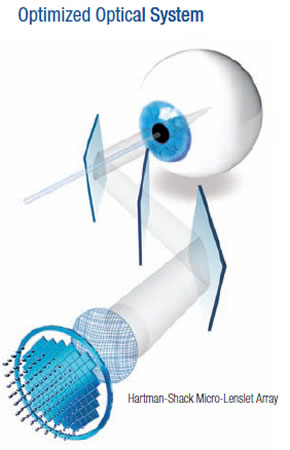
Wavefront Technology measures the wavefront of light reflected from the retina and the refractive power with various sensors divided by sectors and analyzes them with extreme precision.
Micro Lens Array
Huvitz’ own developed Micro Lens Array creates a number of separated focal spots, of which the pattern provides valuable information of the customer’s ocular system.
Customized Lens Manufacturing
High order aberration and Zernike map data output function allow premium custom spectacle or contact lens manufacturers to improves vision accuracy and power.
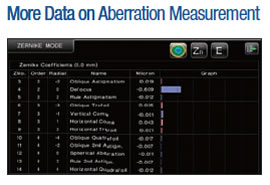
High order aberration data such as Coma, Trefoil, Spherical Aberration, Secondary Astigmatism, and Tetrafoil, which was only available in wavefront aberrometers, now is available in Huvitz HRK-8000A! Clinical usage of this data is all in your hands!
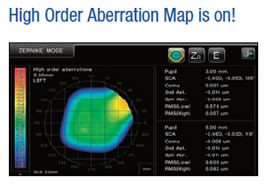
Besides the conventional data such as Spherical, Cylinder and Axis, the high order aberration data is displayed in a graphical Zernike refraction map for better understanding of patient’s eyes and superior clinical decision making. Besides the conventional data such as Spherical, Cylinder and Axis, the high order aberration data is displayed in a graphical Zernike refraction map for better understanding of patient’s eyes and superior clinical decision making.
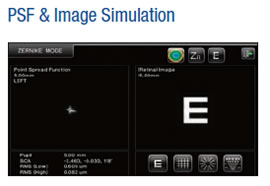
Point Spread Function (PSF) and chart simulation of retinal display can make patients understood in a much better way of their clinical status of eyes and customized lens benefits.
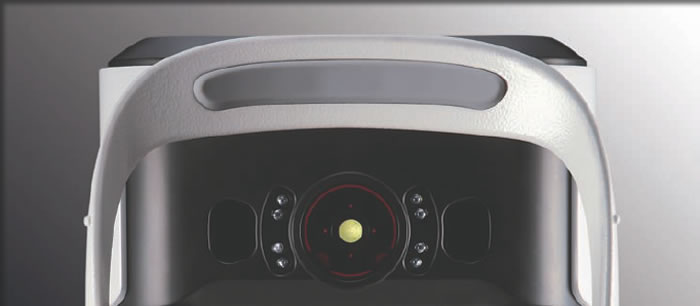
The World's First Contact Fitting Guides and Recommendations.
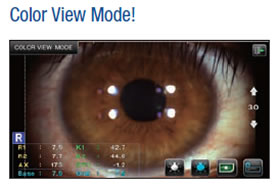
The Full Color CCD camera and white LED light source in the auto refkeratometer enable you to see eyes and contact lens fitting status which was previously only possible with slit lamps.
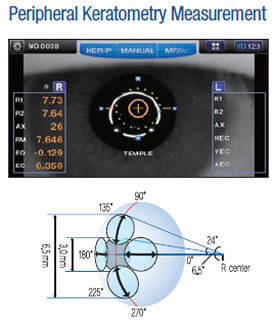
HRK-8000A provides peripheral keratometry measurement data that can be greatly useful for fitting contact lenses.
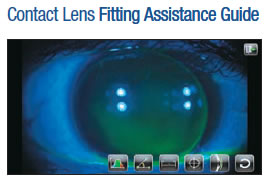
The World’s First contact lens fitting function in an auto ref-keratometer enables you to see fluorescein liquid with blue illumination. The HRK-8000A also analyzes and simulates the lens fitting status with automatic calculation and recommendation.
Contact Lens Prescription Guide
Image capture and contrast regulation is possible. The HRK-8000A gives you the best On-K fitting guide based on the base curve and KER value measured!
Ultra High Precision KER Data
Mire ring and LED sources enable highly reliable keratometry data of the corneal base curve to be obtained.
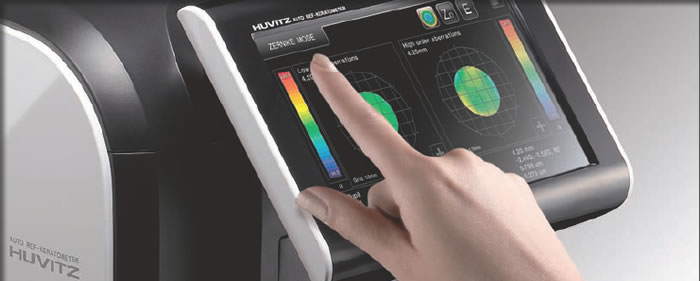
Unmatched Performance & Speed Provides Comfortable User Enviroment.
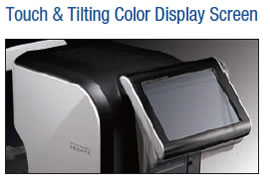
High brightness and contrast VGA 7” wide color TFT LCD screen provides with high resolution video images. Smooth and free tilting function also offers you a comfortable and clear view at any angle.
Auto Tracking
The cutting edge auto sensor and 3 dimensional movement mechanism enables you to track down a measuring focus of an eye automatically and complete the measurement perfectly even with an inexperienced user.
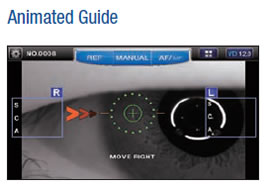
In case a measuring point is out of auto tracking range, the animated guide on the screen suggests how to operate the joystick in the easiest and most intuitive way.
Vision Comparison Function
The internal chart provides a vision comparison function of current vision and corrected vision.
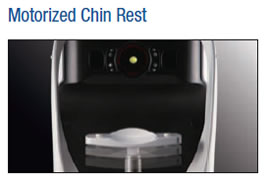
Just by pressing the Up & Down buttons, users can set the height of the measuring point comfortably and quickly
Faster Measurement Speed
Faster measurement speed than any other competitors’ equipment!
Comfortable One Touch Lock
The upper moving stage can be locked easily with the one touch button, making locking smooth and easy.

Automatic paper cutting and one touch paper roll change functions are new advantages of the HRK-8000A.
Ext. Monitor & Network Connectivity
Full HD video output through the HDMI port provides a differentiated explanation base for clinical consulting with your patients. HRK-8000A supports network connectivity with Huvitz Digital Refraction System enabling easy and fast refraction in networking.
Unlike many conventional diagnostic devices, HRK-8000A is based on Hartmann-Shack wavefront sensor, which analyzes many focal spots of a light wavefront.
It has the ability to measure not just the basic refraction error of a customer, but to obtain a spatially resolved refraction map. The new HRK-8000A utilizes a unique wavefront analysis algorithm and surpasses conventional and simple refraction offering added values with high order aberration data output for customized lenses and observation of patients before and after refractive surgery. Experience the whole new wavefront Auto Ref Keratometer form
Huvitz, HRK-8000A!
Image showing the Huvitz HRK8000 A connected to an external monitor (optional)
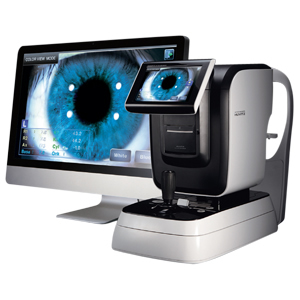
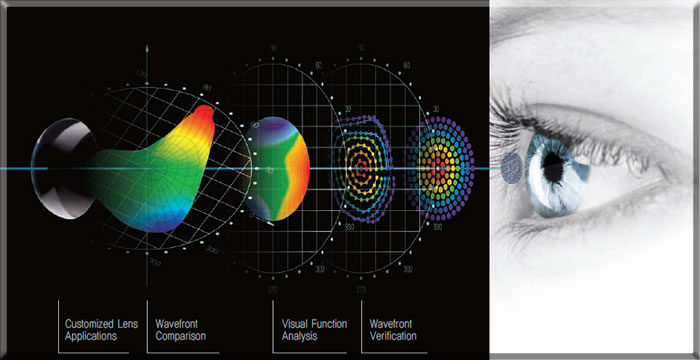
SPECIFICATIONS
MEASUREMENT MODE
K/R Mode Continuous Keratometry & Refractometry
REF Mode Refractometry
KER Mode Keratometry
CLBC Mode Contact Lens Base Curve Measurement
KER P Mode Peripheral Keratometry
Color View Mode Color View & Contact Lens Fitting Assistance
(White & Blue LED Light)
REFRACTOMETRY
Vertex Distanc(VD) 0.0, 12.0, 13.5, 15.0
Sphere(SPH) -30.00~+25.00 (VD=12mm)
(Increments: 0.01, 0.12, 0.25D)
Cylinder(CYL) 0.0012.00D (Increments 0.01, 0.12, 0.25D)
CLBC Mode 1~180( Increments:1
Cylinder Form -, +,
Pupil Distance 10~85mm
Minimum Pupil Diameter 2.0mm
KERATOMETRY
Radius of Curvature 5.0~13.0mm (Increments: 0.01mm)
Corneal Power 25.96~67.50D
(When corneal equivalent refractive index is 1.3375)
(Increments:0.05, 0.12, 0.25D)
Corneal Astigmatism 0.00~-15.00D (Increments:0.05, 0.12, 0.25D)
Axis 0~180(Increments:1
Pupil, Iris Diameter 2.0~14.0mm (Increments:0.1mm)
Memory of Data 10 measurements for each eye
MOVEMENT RANGE
Up-Down
Left-Right
Forward-Backward
OTHERS
Display 7 inch Wide Color TFT LCD,
Touch panel with Tilting function
Internal Printer Thermal Line Printer with Auto Cutting function
Power Saving Automatic switch-off(5min)
Power Supply AC100-240V, 50/60Hz(Free Voltage), 60W
Dimension/ Weight 262(W) x 518(D) x 441(H)mm / 20.9kg
Desings and details can be changed without prior notice for improvements.
www.deviceoptical.com











































